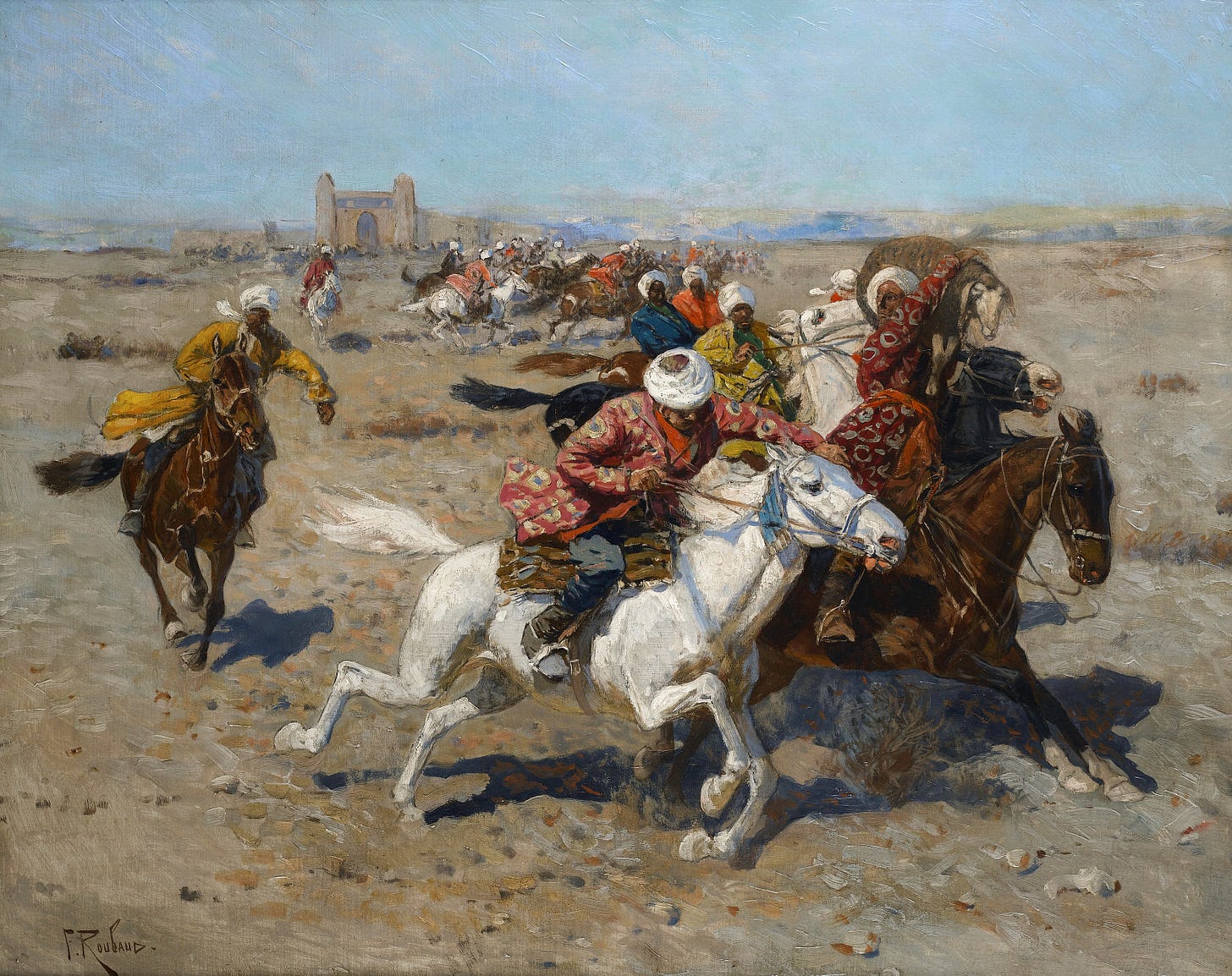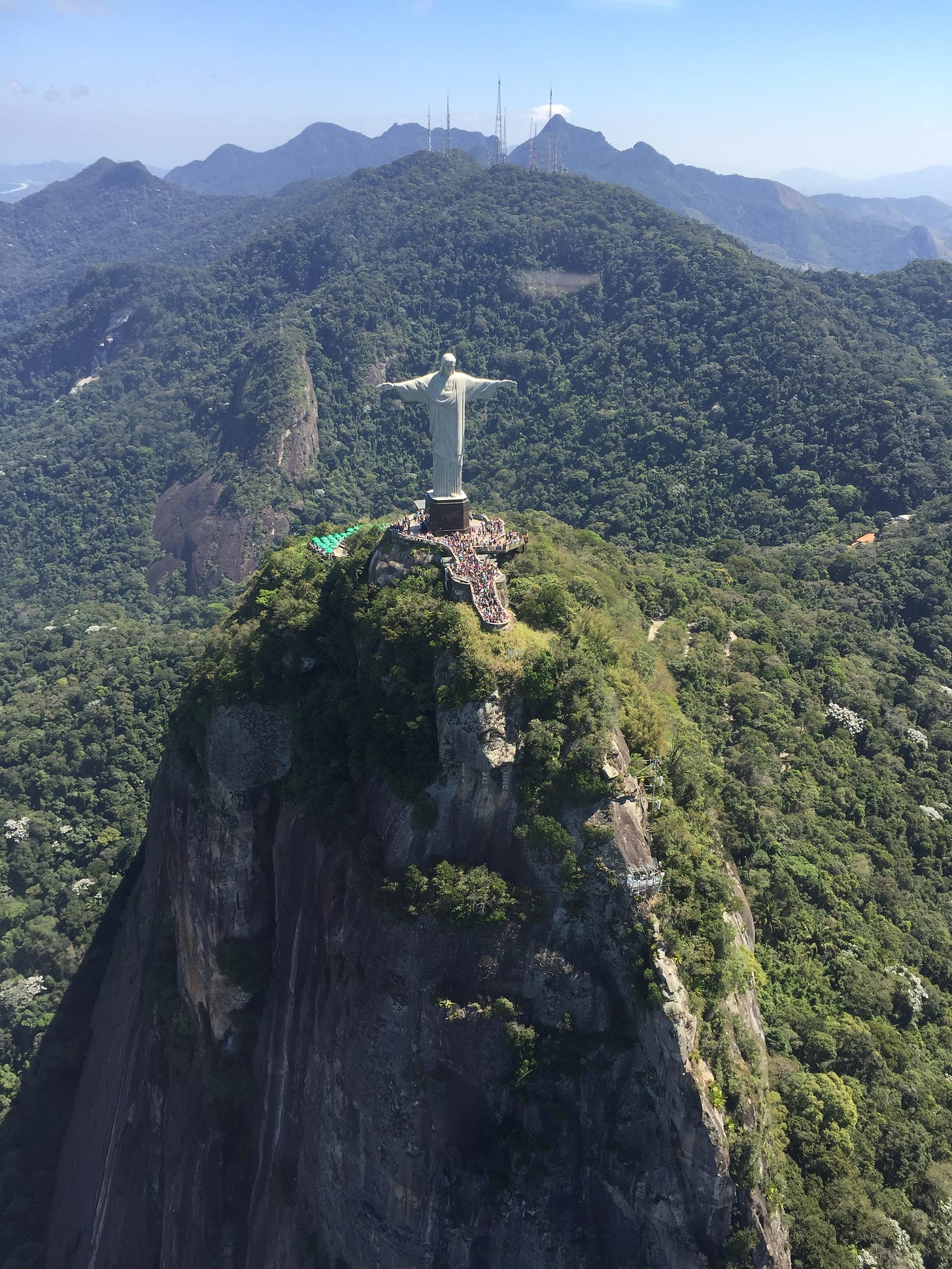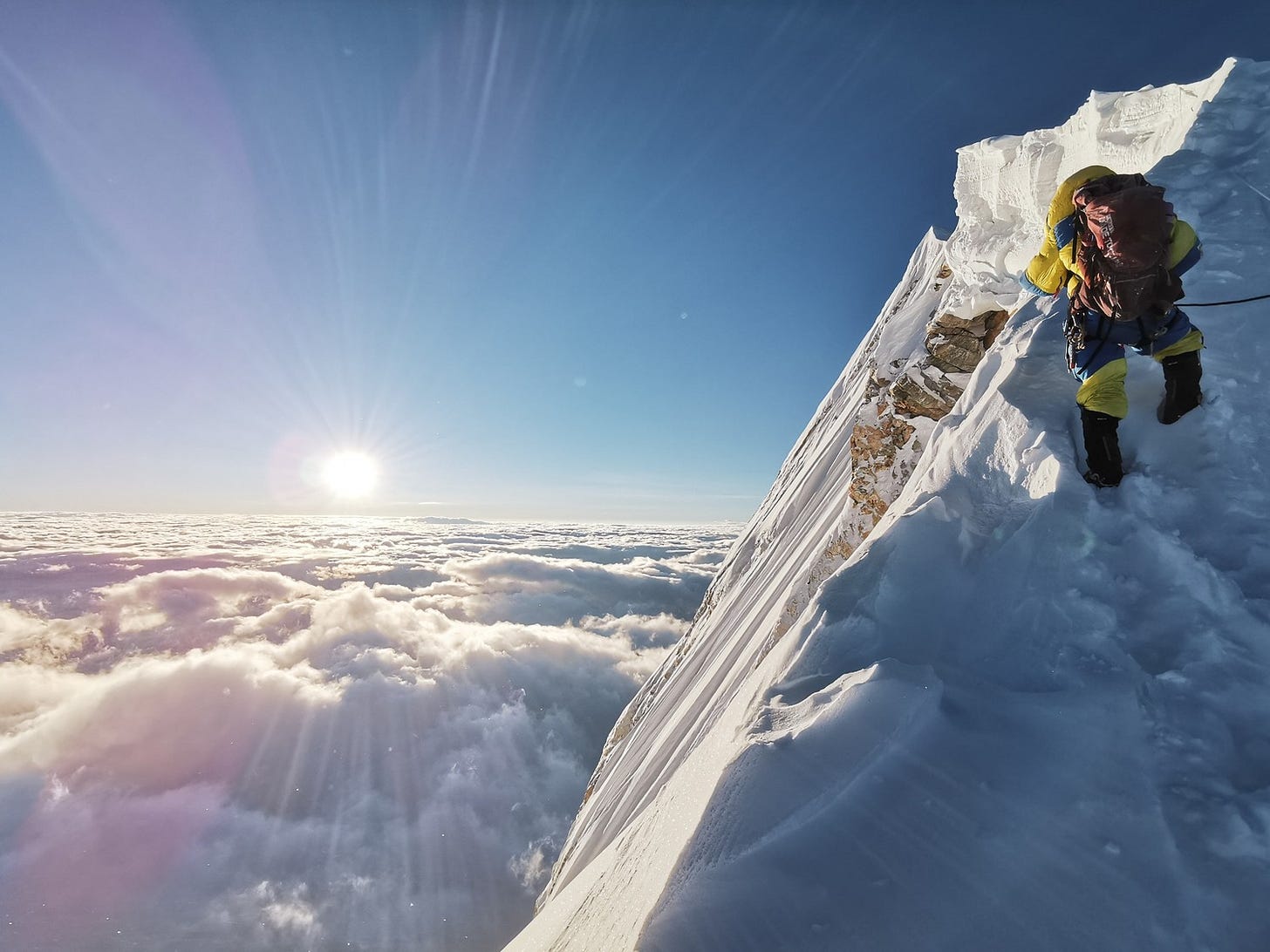The Seven Deadly Sports
Mountaineering is a sport, but most of the rest are merely games. So says Ernest Hemingway. [1400 words 6 min
“There are only three sports: bullfighting, motor racing and mountaineering. All of the rest are merely games.” Attributed to Ernest Hemingway.
Motor racing is safer these days than it was in Hemingway’s time. Bullfighting on its way out for reasons of animal welfare. But humans – and more especially, male humans – have come up with plenty of other dangerous things to do.
Here’s a bit of a list, compiled from detailed statistics and adjusted forward to the present day.1 Will Mountaineering still make it as an activity that remains so much more than a mere game?

Hemingway on bullfighting
We (the sports lovers of Britain and USA) are not fascinated by death, its nearness or avoidance. We are fascinated by victory, and we replace the avoidance of death by the avoidance of defeat. It is a very nice symbolism, but it takes more cojones to be a sportsman when death is a closer party to the game. [Ernest Hemingway Death in the Afternoon (1932)
7 Cheerleading
The magazine Runners Athletics in 2023 issued a list of what it considered to be the 20 most dangerous sports. Straight off, there’s a surprise at No. 19. “In girls’ high school athletics, cheerleading accidents account for 65% of all catastrophic injuries.” A person tossed 7m into the air with no more protective gear than a pair of pompoms: let’s just say, the guys at the bottom really, really have to catch you correctly. Every year, 16,000 cheerleaders suffer serious injuries, including in extreme cases broken necks and paralysis. Fatalities ran at one a year from 1991 to 2015, and fewer after that as new safety rules were introduced.
The interesting thing in this video is watching the cheerleaders (at 4:20) reacting to the crash test dummy hitting the floor from 7m up.
6 Goat Polo
Afghanistan’s national game, Buzkashi, or goat polo, comes in at No. 13 on Runners Athletics’ list. “Fatalities are rare.” Two teams on horseback, armed with whips for discouraging the opponents with, try to wrestle a decapitated dead goat into a goal area at either end of a 100m long pitch.
A version on yaks is played among the Tajiks of Xinjiang. Possibly less lethal, because slower. Perhaps deadlier, given the even worse consequences of getting trodden on.
Traditional games could last for several days. Salvaged Soviet tank crew helmets are popular headwear. Rules include no biting, hair-pulling, use of weapons, or deliberate whipping of a fellow player. While traditionally involving a dead goat, a dead calf has been found less liable to disintegrate under the pressure of game conditions … you don’t want to know any more about this, do you?
We arrive Hangover Trail head, complete with “You could die here” sign. Cool! [Mountain bike video, Sedona Arizona.]
And yes, for historical resonance bullfighting does still make the Runners Athletics list, coming in at No. 5. Since 1700, about 530 bullfighters have died in the ring.
5 BASE jumping
BASE jumping, No. 3 on the magazine’s listing, involves leaping with a parachute off Buildings, Antennae (ie radio masts), Spans (ie bridges) and Earth (eg Mount Everest). It’s dangerous in two different ways. You may be starting too close to the ground, so the parachute doesn’t have time to open. Or you may be going down too close to the A (Antenna), B (Building) or E (cliff), again interfering with the parachute. On safely reaching the ground, you’re also liable to get arrested.
The highest jump so far is off the upper slopes of Cho Oyu at 7700m, down to the Rongbuk Glacier. Valery Rozov in 2016 broke his own record from 2013, before his final, fatal jump in 2017. Even more dangerous though is the world’s lowest base jump, off Christ the Redeemer in Rio, at just 29m high.
By 2017, over 2000 people had achieved a jump from every one of the four categories, thus earning a coveted BASE number for their base, and possibly baseless, sporting acts. Between 2007 and 2017, 223 people died – averaging one for every 2317 jumps.
4 Cave diving
Freediving – diving without Scuba gear, down to 120m – comes in at No. 4 on the magazine’s list: one estimate suggests 100 deaths per year. But the diving gets even more dangerous when you’re doing it not only underwater but also underground, in flooded cave systems. Cave divers include John Volanthen and Rick Stanton from Yorkshire who rescued the football team from the Tham Luang cave in Thailand in 2018. One brave special forces diver, not experienced in cave diving, died during that rescue.
The dangers include getting lost, mistiming your air, equipment damage in confined rocky spaces, and flash floods: in every case likely to be fatal. About ten cave divers die every year, out of a few thousand practising the sport.
3 Motorcycle racing on the Isle of Man
Between 1907 and 2023, there have been 156 competitor fatalities during official practices or races of the Isle of Man TT, plus 269 on the Snaefell Mountain Course, as well as a small number of spectators. In the 2022 race, out of about 100 riders six died.
Richard "Milky" Quayle, a local Manxman, won the TT in 2002, and was nearly killed the following year, when his shoulder caught a rockface on a corner. “It's the best thing in the world anyone could ever want to do,” he said. “Why would I want to stop it just because it hurt me?”
I think you can only really appreciate life if you're putting yourself into places that risk it – TT champion Peter Hickman
Here’s 6 minutes of bicycles going by very fast. The first crash is 20 seconds in.
2 Mountaineering
And yes, Mountaineering comes in at Number 2 on the Runners Athletics list. It feels dangerous, it looks dangerous, and appearances are not deceptive.
There are two classes of dangers in mountaineering. Subjective dangers are the ones you can control yourself: falling off, in fact. Skill and technique will minimise this sort of danger – at which point, of course, you switch up to a more difficult route.
But the other sort of danger, the ‘objective’ risks, are the ones you can’t do anything about. Crevasses. Blizzards. Avalanches. Lightning. Falling stones. Falling lumps of ice. The only way to eliminate these is by not climbing in the places where they happen.
Unfortunately, they happen pretty much everywhere.
There are about 30 mountaineering deaths per year just in North America. There have been over 300 deaths on Everest alone. On Annapurna, the risk is estimated at over 25%: that’s one death for every 3 or 4 reaching the summit. The main reason for Annapurna’s exceptional deadliness is that the standard route runs up an unstable avalanche slope the entire way.
“In our daily lives risk is managed all the time. There are only a couple of places left where we have the opportunity to evaluate hazard for ourselves: the sea and the mountains. That satisfaction shouldn't be taken away. [That said,] it's astonishing what [risks] people will overlook in order to carry out their objective.”
Mark Diggins, head of Scottish Avalanche Information Service, interviewed on the UKclimbing website October 2023
1 Free Solo climbing
Normal, roped rock climbing is a fairly safe sport – one study shows both tennis and running to be more dangerous. The main thing is not to come off too close to the ground: high on a cliff, the stretchy nylon rope absorbs your fall.
Rock climbing is a popular sport, and the protection from the climbing rope isn’t perfect: there are around 30 rock climbing-related deaths per year. Of these deaths, 25% are due to abseiling accidents (descending by sliding down a rope) and 30% – 9 or 10 lives a year – are due to solo climbing.2
Interviewer: Here is what I don't understand. One little mistake, one little slip and you fall. You die.
Alex Honnold: Yup. You seem to have understood it pretty well.
From the film ‘Free Solo’ (Elizabeth Chai Vasarhelyi and Jimmy Chin, 2018)
‘Solo’ means alone, obviously, and usually without any rope-based protection. ‘Free’ means avoiding protection of any sort – if there are metal anchors already fixed in the rope, you mustn’t even touch them. The speed and freedom of not being tied down to the mountain or anybody else is obvious. So is the extreme level of danger.
From the movie ‘Free Solo, Alex’s companion Tommy Caldwell’s voiceover: “Everybody who has made free soloing a big part of their life – is dead now.” This is an exaggeration. Alex Honnold is still alive, for one. However, between 2013 – 2018, five free soloists died on Yosemite’s El Capitan alone.
Watch 9 terrifying minutes of Alex Honnold soloing ‘The Phoenix’ at Yosemite
However lethal our sport may be, we persuade ourselves that there are reasons why we’re not going to make those mistakes. Which works okay for cheerleading, or a classic AD-graded ridgeline in the Alps. But apparently it even applies to those setting off up the Eiger North Face, or the Isle of Man TT race, or free-soloing the 1000m cliffs of El Capitan.
Sport. Nobody ever said it had to make sense.
I’m not asserting that the detailed statistics are necessarily correct. It’s a well known statistic that 47% of all statistics are wrong while the remaining 76% are misleading
figures from Angel at https://hardclimbs.info/free-solo-deaths/ “There are only a few people in the world who free solo, and out of those people most have already died.”









For many, mountaineering is not intrinsically competitive and what limited rules there might be are generally a consensus ethic around respecting the mountains. Consequently, it is hard to consider it a sport, or a game (in a Wittgenstein-ish way).
For some, there is a fuzzy continuum between climbing a high mountain for personal satisfaction and the super-contrvied arena of Olympic climbing, whereas for others, maybe most, these are very distinct spheres.
Climbing is fraught with danger and is more like an adventure than a sport